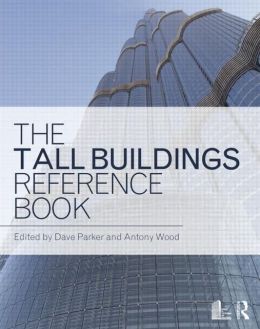 [内容简介]
[内容简介]
As the ever-changing skylines of cities all over the world'show, tall buildings are an increasingly important solution to accommodating growth more sustainably in today’s urban areas. Whether it is residential, a workplace or mixed use, the tower is both a statement of intent and the defining image for the new global city.
The Tall Buildings Reference Book addresses all the issues of building tall, from the procurement stage through the design and construction process to new technologies and the building’s contribution to the urban habitat. A case study section highlights the latest, the most innovative, the greenest and the most inspirational tall buildings being constructed today.
A team of over fifty experts in all aspects of building tall have contributed to the making of the Tall Buildings Reference Book, creating an unparalleled source of information and inspiration for architects, engineers and developers.
[目录]
Part 1:Why Build Tall?
Introduction
Antony Wood
1. Brief History of the 20th Century Skyscraper
Gail Fenske, Roger Williams University, USA
2. Aesthetics, Symbolism and Status in the 21st Century
Chris Wilkinson, Wilkinson Eyre Architects, London
3. A Client’s Perspective
Bob B. Brennan, Tom Akerstream and Mark Pauls, Manitoba Hydro, Canada
4. Tall Building Economics
Steve Watts, Davis Langdon, London
5. Is Refurbishment a Better Option?
Sara Beardsley and Jeffrey Boyer, Adrian Smith+Gordon Gill Architecture, USA
Part 2: Human, Social and Urban Issues Introduction Antony Wood Tall Buildings and the Public Domain Richard Keating, Jacobs, Los Angeles, USA Masterplanning Urban Habitats Stephen Engblom, AECOM, San Fransisco, USA Building Tall – the Future of Cities Ken Shuttleworth and David Taylor, MAKE, London The Public Realm and Its Impact on Tall BuildingsSteve Hanson and Roger Courtenay, AECOM, Washington DC, USA Internal Environment and Planning Jason Pomeroy, Broadway Malyan, Singapore The Role of Atria Swinal Samant, University of Nottingham, UK
Part 3: Sustainable Responsibilities and Risk Introduction Dave Parker Sustainability and Energy Considerations RickCook, Bill Browning and Chris Garvin, Cook + Fox Architects/Terrapin Bright Green, New York, USA Towards Energy Independence Russell Gilchrist, Roger Frechette, PositivEnergy Practice, USA and Dave Parker, UKRecent Advances in Technologies, Techniques and Materials Richard Marshall , Buro Happold, Dubai and Graham Knapp, CSTB, Nantes, France Risk Considerations for Design Shyam Sunder, Fahim Sadek and Jason Averill, The National Institute of Standards and Technology, USA
Part 4: Engineering the Tall BuildingIntroduction Dave Parker Limits of Materials and Structures Richard Tomasetti, Joseph Burns & Dennis Poon, Thornton Tomasetti, New York, USA Structural Possibilities William Baker, SOM,Chicago, USA Foundation and Basements Tony A Kiefer and Clyde N Baker, AECOM,Vernon Hills, IL, USA Seismic Design Ron Klemencic, Magnusson Klemencic, Seattle, USA Designing for Wind Peter Irwin, RWDI, Guelph, Canada
Part 5: Enclosure, Servicing and Construction Introduction Dave Parker Facades and Curtain Walling Nicholas Holt, SOM, New York, USA Towards a Double Skin Solution Werner Sobek, Thomas Winterstetter and Claus Peter Weller, Werner Sobek, Stuttgart GmbH, Germany Fire Safety and Evacuation Simon Lay, WSP Group, London, UKServicing the Tall Building Alistair Guthrie and Robert Henderson, Arup, London, UK Vertical Circulation - Past, Present and Future Steve Edgett, Edgett Williams Consultants, Seattle, USA Logistics and Project ManagementIan Eggers, Phil Solomon, Warren Alexander-Pye and Malcolm Hannon, Mace Group, London,UK Afterword: The ‘future’ of Tall Antony Wood, CTBUH, Chicago, USA
Part 6: Case Studies

 新书报道
新书报道